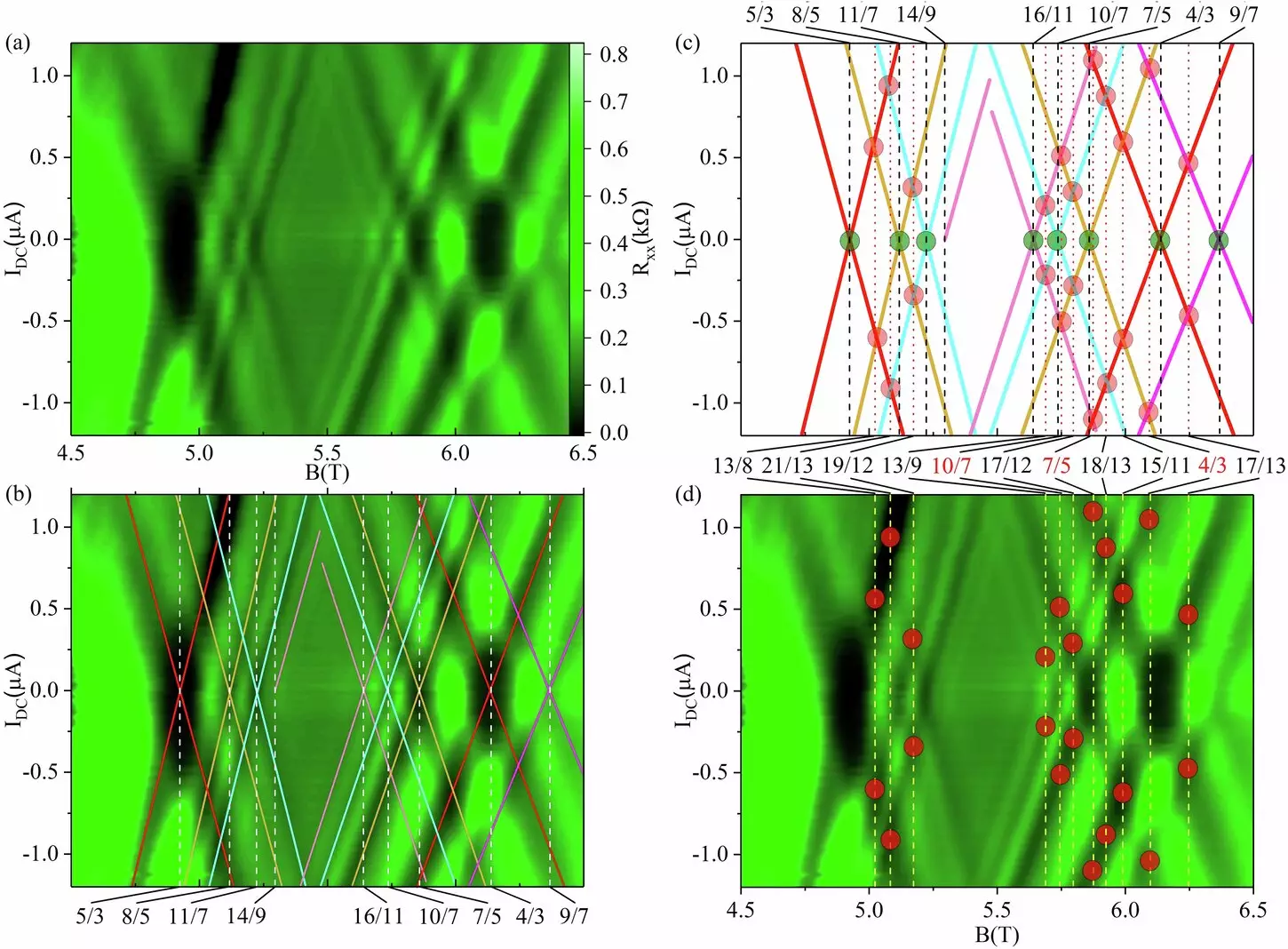Imagine a universe limited to two dimensions, where the properties of matter and the rules that govern physical phenomena diverge greatly from the three-dimensional reality we inhabit. This “flatland” manifests unique behaviors in subatomic particles, provoking researchers to unveil intricate physical principles that could redefine our understanding of solid-state physics and quantum mechanics. A team from Georgia State University, spearheaded by Professor Ramesh G. Mani and his former student U. Kushan Wijewardena, has made significant strides in studying this peculiar dimension, particularly through the lens of fractional quantum Hall effects (FQHE). Their recent findings, published in the journal *Communications Physics*, highlight not only new phenomena within this framework but also pave the way for future technological advancements.
The quantum Hall effect has long been a cornerstone of condensed matter physics, originating in the early 1980s with Klaus von Klitzing’s groundbreaking discovery that precise electrical measurements could yield accurate values for fundamental physical constants. This revelation earned Klitzing a Nobel Prize in 1985 and catalyzed extensive research into FQHE, which emerged later and allowed for the conceptualization of particles with fractional charge—a discovery that garnered further Nobel recognition in 1998. Further explorations led to the discovery of materials like graphene, which introduced the concept of massless electrons, demonstrating the potential for unprecedented advancements in electronics and earning accolades in 2010. The interplay between condensed matter physics and groundbreaking phenomena continues to inform the development of modern electronics, including smartphones, computers, and renewable technology such as solar cells.
The research team approached their investigations using experimental setups designed to explore these two-dimensional systems under extreme conditions—close to absolute zero and in the presence of powerful magnetic fields. By applying a supplementary current to specially engineered semiconductor devices crafted from gallium arsenide and aluminum gallium arsenide, they delved into the FQHE realms. Remarkably, they observed phenomena previously unseen, including unexpected splits in FQHE states and crossings of split branches, which allowed for the exploration of new non-equilibrium states of matter.
Professor Mani articulates this exploration metaphorically: “Think of traditional studies on fractional quantum Hall effects as exploring the ground floor of a building. Our research ventures into the upper floors, uncovering the complexities and mysteries that lie beyond the familiar landscape.” This perspective illustrates how their work expands our understanding from well-known territories into the uncharted upper levels of flatland physics.
The implications of this research extend beyond mere curiosity; they challenge established theories while hinting at a hybrid origin for the non-equilibrium excited-state fractional quantum Hall effects observed by the researchers. This groundbreaking approach opens the door to fundamental advancements in condensed matter physics, potentially informing future developments in quantum computing and advanced materials science. By revealing these novel aspects, Mani and Wijewardena inspire a new generation of physicists to delve deeper into this fascinating area of study.
U. Kushan Wijewardena, who transitioned to a faculty role at Georgia College and State University after earning his Ph.D., shares his enthusiasm about their findings. “For years, we have endeavored to understand these unique phenomena, and finally, our observations have unveiled new layers of understanding. The possibilities for explaining these results are truly exciting.”
Preparing for Tomorrow’s Technologies
As the team continues to investigate even more extreme conditions and innovative experimental methodologies, they anticipate further enlightening discoveries that could have profound far-reaching implications. Their efforts contribute not only to scientific knowledge but also to the development of high-tech industries that thrive on advancements made in condensed matter physics. The ongoing research embodies a synthesis of knowledge, creativity, and determination to unpack the complexities of flatland physics.
Through their rigorous inquiry, Mani and his team are not just addressing questions about electron behavior, but they are also laying the groundwork for future innovations, potentially enhancing energy efficiency, data processing, and the overall capabilities of emerging technologies. Their work signifies a critical juncture in the evolution of physics and its applications, demonstrating how the pursuit of knowledge in seemingly obscure realms can yield dividends that resonate across multiple disciplines and industries.
As they forge ahead with new experiments exploring various flatland parameters, the team remains vigilant for further novel phenomena. Each trial brings them closer to unraveling the intricacies of quantum systems, contributing to an expansive field that continues to inspire generations of researchers. The unfolding narrative of flatland physics serves as a reminder that our pursuit of understanding can unveil deep complexities and lead us toward revolutionary advancements in technology and beyond.


Leave a Reply